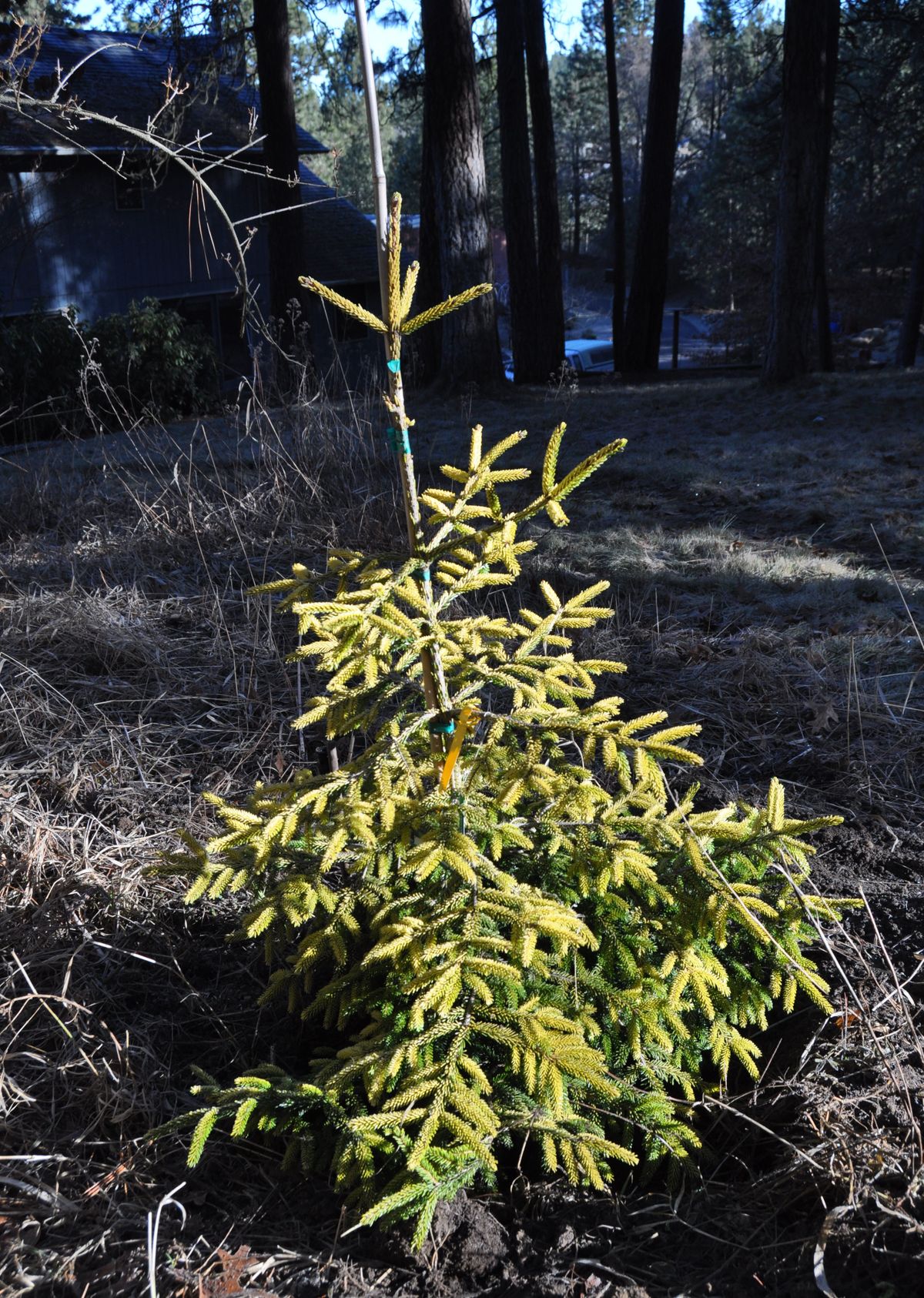Two trees come home from garden show trip

Last week was my annual sojourn to Seattle and the Northwest Flower and Garden Show. As always, it was wonderful to be in a place that was warmer than Spokane even with our recent run of record-breaking warmth.
The display gardens were beautiful; many were full of forced tulips, daffodils and hyacinths that filled the air with the fragrance of spring. My favorite was one that featured ways to provide habitat for pollinator insects including honeybees and blue orchard mason bees.
Beyond the much-needed sights and scents of spring, the show features a huge market with vendors from all over the region offering anything garden-related, and then some. Usually I skip buying plants because they would have to live in my house until the ground thawed. Not this year! With the ground thawed and dry enough to work, I splurged on a couple of trees I have been looking for. A dwarf, weeping Douglas fir called Graceful Grace and a golden-needled Skylands oriental spruce.
The weeping Graceful Grace Douglas fir has drooping branches that fall evenly from each successive whorl of branches. The needles are soft with a gray green color and a silver underside. They are slightly longer and narrower than our native Douglas fir. The tree can get to 10 to 15 feet tall and 6 to 8 feet wide in 10 years and 40-by-20 feet at full maturity. I am using it as a focal point in an area of my garden that emphasizes the use of native plants.
Over time the tree will grow into a living sculpture. It needs full sun and medium watering to do well.
This cultivar was found in the garden of a Masonic retirement home in York County, Pennsylvania, in about 1969 by Albert Ziegler, who named it after his wife, Grace.
The Skylands’ claim to fame is its naturally golden needles and horizontal branching habit. I have several dark backdrops in my upper yard and wanted a golden needled conifer to brighten up those areas. They also create winter interest when everything else is dormant and dull. The tree will grow to about 10 feet tall in 10 years and eventually 40 feet tall and 20 feet wide. Its stiff horizontal structure adds an architectural element to the garden. It needs sun to keep its needles bright gold and will need moist soil to do well.
I passed up one other golden conifer, the Chief Joseph lodgepole pine. I have one that has been struggling for years and every year I keep hoping it will take off. Chief Joseph’s needles turn a brilliant yellow in the winter which adds a bright bit of winter interest to the garden. In the summer the needles revert to green. It grows slowly reaching a height of 10 feet in as many years. The tree was found growing in the wilds of the Nez Perce region of North Idaho.